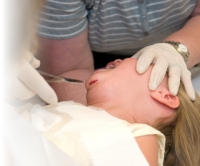Chronic Pain in Children course



This session describes the assessment, diagnosis, formulation and management of children who have chronic pain.
Learning Objectives
By the end of this session you will be able to:
- Describe the multidimensional nature of chronic pain in children
- Explain how the biopsychosocial model of pain underpins the assessment, diagnosis, formulation and management of children's chronic pain
- List the components of multidisciplinary chronic pain management
- Describe appropriate management pathways to meet the needs of children with chronic pain and their families
Chronic pain is pain that persists beyond the expected time of healing or beyond 3 months. It can be due to injury, may be disease-related or the cause may not be known, i.e. idiopathic or functional.
Christina is a paediatric psychologist who has worked as an academic and clinician in the UK and abroad.
Her research and clinical practice dovetail and focus on three intertwined themes:
a) The cognitive and affective neuroscience of pain
b) The development of theory driven psychological interventions for the management of acute and chronic pain in young people
c) The evaluation of the efficacy and effectiveness of psychological interventions in young people’s pain management.
Christina’s randomized controlled clinical trials have been critical to the establishment of hypnosis as an evidenced-based intervention in the care of children with cancer. Christina has cared for children with various chronic medical conditions including cancer, cystic fibrosis, chronic kidney disease, epidermolysis bullosa, and sickle cell disease.
Christina has contributed to evidence-based guidelines on acute and chronic paediatric pain, pain in epidermolysis bullosa and sedation in children.
Christina has written a book on procedure-related cancer pain in children, and is a content author on the e-PAIN project.


Dilini trained in paediatrics in London with specialty posts in paediatric haematology/oncology at The Royal Marsden Hospital and palliative care medicine at Great Ormond Street Hospital. She has an MSc. in clinical neuroscience from University College, London, a diploma in palliative medicine from Cardiff University and a postgraduate certificate in pain medicine from Edinburgh University.
Dilini is one of only eight consultants in the UK specializing in paediatric palliative medicine since 2007 and has specialized in paediatric pain medicine at Great Ormond Street Hospital, providing paediatric support to the chronic pain service there since 2005.
Her research interests are pain and symptom management in life-limited children and young people.
Dilini is a content author for the e-PAIN project.

- Anaesthesia Fundamentals | Physiology | Ventilatio...
- Posted By eIntegrity Healthcare e-Learning
- Posted Date: 2024-12-26
- Location:Online
- This session describes how and why ventilation and perfusion vary in the healthy lung. Causes of hypoxia, such as hypoventilation, increased dead space and shunt, are discussed to help the trainee explain and manage hypoxia clinically.
- Anaesthesia Fundamentals | Physiology | Pulmonary ...
- Posted By eIntegrity Healthcare e-Learning
- Posted Date: 2024-12-26
- Location:Online
- This session covers the measurement and clinical importance of lung volumes, including functional residual capacity and dead space. Information regarding the performance and interpretation of flow-volume loops is also included.
- Anaesthesia Fundamentals | Physiology | Co2 Carria...
- Posted By eIntegrity Healthcare e-Learning
- Posted Date: 2024-12-26
- Location:Online
- This session covers the physiology of how carbon dioxide is carried by blood, including its conversion into bicarbonate ions and the role of the red blood cell and haemoglobin in this process. The session also describes how buffers work, and the fundament
- Anaesthesia Fundamentals | Physiology | Function o...
- Posted By eIntegrity Healthcare e-Learning
- Posted Date: 2024-12-26
- Location:Online
- This session focusses on the function of haemoglobin in oxygen (O2) carriage from the lungs to other tissues where cells are supplied with the O2 required for oxidative phosphorylation in the mitochondria. We will cover the structure
- Anaesthesia Fundamentals | Physiology | Gaseous Ex...
- Posted By eIntegrity Healthcare e-Learning
- Posted Date: 2024-12-26
- Location:Online
- This session will introduce you to the physiological effects of altitude and the adaptations that occur with acclimatization. It also introduces the pathology and physiology of high pressure and decompression.







